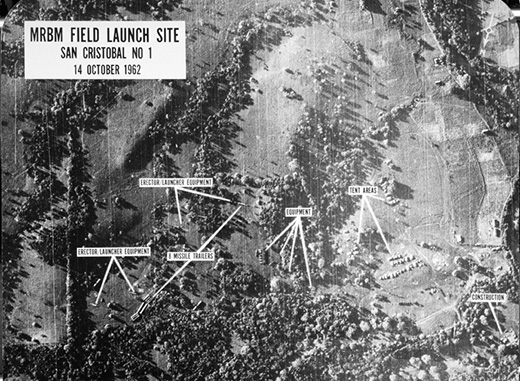The Man Who Saved Our World
I had just turned eight. My mundane days existed at Liberty Street Elementary school in our quiet little town of Middletown, N.Y. It was an old upstate New York manufacturing town whose latest claim to fame was a large state hospital for the mentally challenged. The doctors there were all foreign and from their children, I learned the sport of soccer. Our daily class routine was abruptly interrupted on a bleak and cold late October day in 1962.
Suddenly the fire alarms in the school blared and the town civil defense sirens blazed. We were unceremoniously herded into our dark cavernous school hall. The teachers directed us to sit on the cold slick concrete floors with our backs to the wall. There was a thick air of fear mixed with excitement. They then told us to put our heads between our knees and cover them with our hands. The event later described as a “drill” lasted about 20 minutes. This went on for about 10 consecutive days.
Later in the week, I overheard one of the male teachers saying something like, “Heads between their knees? What — to kiss their butts goodbye?”
This experience resonates with me even many decades down the life line. This was the result of the Cuban missile crisis.
In 1961, Kennedy approved the plan to attempt to overthrow the Fidel Castro regime in Cuba. Directed by the CIA, some 1,400 U.S. trained militia invaded Cuba by land , sea and air. This action was easily quashed by Castro and his troops. It was an embarrassing and miserable failure and only served to heighten the strain between the Russia/Cuba alliance and the US. Over 1,200 were captured and imprisoned with over 100 killed. The plan to overflow the communist regime and install a quasi-democratic government failed. In the ensuing months, Castro and the Soviet leader Nikita Khrushchev solidified their ties .The Russians began moving ships and missiles into installations throughout Cuba.
On October 27,1962 , Kennedy announced that one of our U-2 spy planes had discovered that the Soviets were building secret missile bases only 90 miles from the shores of the United States.
For two weeks there was an intense political and military standoff between the US and the Soviet Union. No one knew that four B-59 Soviet submarines had been sent from a base in the Arctic Circle to the waters of the Caribbean. These diesel powered subs had secretly been dispatched to the Cuban port and had been on an 11 day journey .They were to be stationed in Cuba as an additional threat against the U.S. aggression. These subs were fitted with one each “special” 10-kiloton nuclear torpedoe.
This was equivalent to the size of the bomb dropped on Hiroshima. They had no contact with the commanders in Moscow and basically were given autonomy regarding the launching of any ballistics.
Luckily that day , Vasili Arkhipov, brigade chief of staff was serving on board the B-59. His sub was cornered by 11 US destroyers and the carrier USS Randolph. The U.S. ships began dropping depth charges around the sub. The intention was to scare it to the surface. The subs, having no direct contact with Moscow, had no idea that their superiors had been contacted by the US regarding this strategy. Cut off from outside contact and buffeted by depth charges the most obvious conclusion to the crew was that a war had started .Most of the officers were prepared to launch the doomsday torpedoes. They were empowered to do so at will.
.While two senior officers wanted to launch, three were required to do so. Luckily 36 year old Vasili Arkhipov , brigade chief refused to give the order . He convinced the other officers that the US was trying to get them to the surface. Otherwise they would have already destroyed them. There was no war raging.
Launching the nuclear torpedo would be a fatal mistake .The sub went to the surface , was escorted out by the fleet and headed back to the Soviet Union. This close call lead the leaders of both nations to open negotiations which led to the withdrawal of the Soviet missiles from Cuba. This was the closest the world had gotten to an all-out nuclear war. Thanks to his courage and clear headed decision, he was instrumental at saving the world as we know it. It likely was the most dangerous day in human history to that point.
For his courage. Arkhipov was the first person awarded the Future of Life Award by the Cambridge based Future Life Institute, in 2017. It was given posthumously as he passed away in 1998.
So in looking back at those two weeks I experienced in 1962, none of us had any idea how close we did come to kissing our asses goodbye. While we are dealing with world threats daily, we pray that there are men and women like him in Iran, Russia, China, North Korea, U.S., et al, that given that terminal decision, choose life and peace rather than an end to our world.


